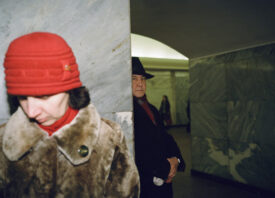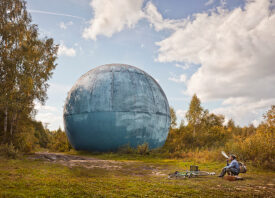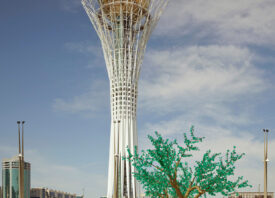Search this site
Behold the Glitz and Grandeur of Russia’s Metro Stations Built by Stalin in the 1930s
Komsomolskaya Metro Station, Moscow, Russia
Elektrozavodskaya Station, Moscow, Russia
In the early 1930s, Joseph Stalin and his longtime associate Lazar Kaganovich conceived of and oversaw the building of the Moscow Metro, a palatial underground network designed in large part to inspire reverence and devotion for the Communist Party of the Soviet Union. Eighty years since its opening in 1935, Vancouver-based photographer David Burdeny walks beneath the high marble ceilings and decadent chandeliers, capturing what remains of the still-glittering facade that once belied a dark and painful history.
The task set before the architects, explains Burdeny, was to capture the notion of “sveltloe budushchee” or “A Bright Future” for the Soviet Union. Here, commuters would find hope and grandeur while navigating the city, stand in awe of the power of their leader and his vision for their state.
Throughout the lavish underground were positioned busts and mosaics honoring Lenin and the Bolsheviks, all serving to suggest to the people that while the capitalist nations struggled to stay afloat during the Great Depression, those loyal to Stalin would reap the rewards of a socialist state. In order to execute the ambitious project, funds were taken from the country’s struggling grain farmers, who, without their harvest and livelihood, died as part of the larger famine.
In order to photograph the stations without their estimated 9 million daily passengers, Burdeny was granted singular access to the stations after dark. In long exposures, he captured the empty underground palaces in natural light, without a soul in sight. Fallen silent after a long day of busy travelers, the stations seem to stand, if only for an instant, suspended in time.
One year after the opening of the Metro, in 1936, the Great Terror would begin, and both Stalin and Kaganovich would personally sign hundreds of orders for execution. Burdeny’s images, however, allow us to step backwards, to view the metro as it might have been viewed in 1935, before lives and wars were lost, when a future of plenty seemed near at hand.

Novoslobodskaya Metro Station, Moscow, Russia

Taganskaya Metro Station, Moscow, Russia

Kiyevsskaya Metro Station, Moscow, Russia

Prospekt Mira Station, Moscow, Russia

Mayakovskaya Station, Moscow, Russia

Belorusskaya Station, Moscow, Russia

Kiyevsskaya Station, Moscow, Russia

Sportivnaya Station, St. Petersburg, Russia


Arbatskaya Metro Station, Moscow, Russia

Avtovo Metro Station, St. Petersburg, Russia
All images © David Burdeny





